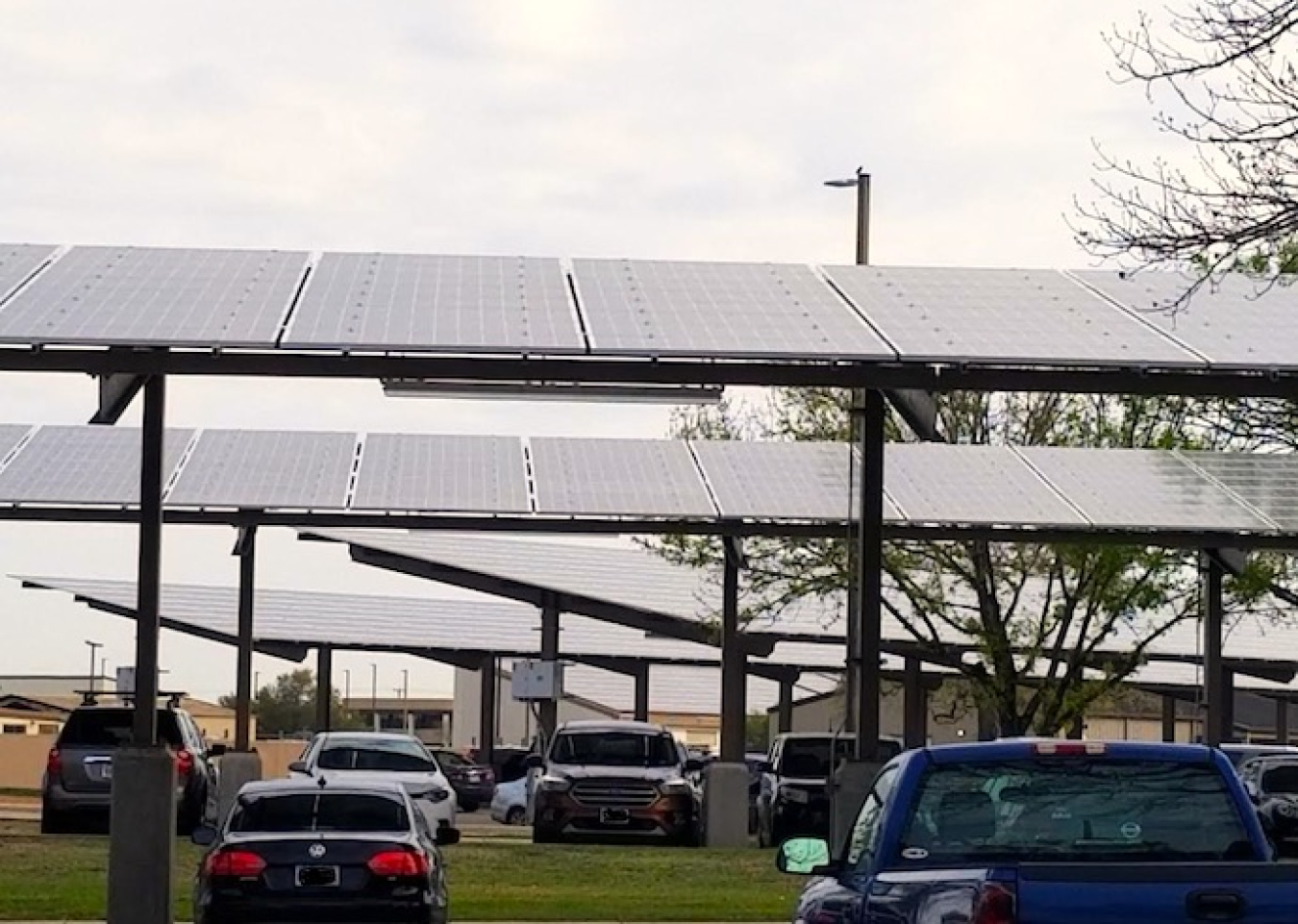
Part of the overall investment included sixty-four roof-mounted solar photovoltaic (PV) systems.
To provide base resiliency and mission continuity, a $132.1 million energy savings performance contract (ESPC) was awarded for Joint Base San Antonio (JBSA) that included a mix of distributed generation and energy efficiency measures. This energy infrastructure project will have positive energy, environmental, and economic impacts while providing decreased energy and water consumption, guaranteed cost savings, greenhouse gas emission reductions, and building system modernization.
Joint Base San Antonio, located in San Antonio, Texas, covers more than 46,000 acres and is the largest joint base in the U.S. Department of Defense (DoD). There are 11 operating locations within a 50-mile radius of San Antonio. The scope of this project included the three primary installations in the San Antonio area: JBSA-Fort Sam Houston (JBSF), JBSA-Randolph (TYMX), JBSA-Lackland (MPLS) and three additional operating locations. As the largest single DoD installation and enterprise, JBSA has a total Plant Replacement Value of about $10.3 billion, a work force of over 8,000 operations and support personnel, and manages an annual budget of $800 million.

A carport solar PV system along with the roof-mounted solar PV systems total 18 megawatts (MW) in total capacity.
JBSA's $132.1 million ESPC was awarded on September 10, 2018, with a performance period of 22 years, using the U.S. Department of Energy ESPC indefinite-delivery indefinite-quantity (IDIQ) contract. The scope of the project provides upgrades and improvements to approximately 900 buildings, totaling 14.7 million square feet and includes seven comprehensive energy conservation measures (ECMs).
The purpose of this ESPC is to deliver an integrated and comprehensive energy security project across JBSA to modernize and optimize base building systems. This ESPC provides resiliency and mission continuity through a mix of distributed generation, energy efficiency measures and targeted microgrid operation for critical loads, to better manage loads and operate during utility outages.
Project Highlights
- Replace approximately 118,000 fixtures with LED fixtures throughout JBSA facilities, parking lots and airfields
- Install enhanced controls on open-protocol framework to eliminate the high maintenance cost of pneumatic controls
- Five new storage tanks for thermal energy storage
- Sixty-four roof mounted solar PV systems and one carport solar PV system totaling 18 megawatts (MW) in total capacity
- Four 65 KW gas-fired microturbines or combined heat and power (CHP) plants at Lackland with 4 MW/8 MWh of battery energy storage
- Five 65 KW gas-fired microturbines or CHP plants at Fort Sam Houston
- Replace existing transformers with high-efficiency dry-type transformers.
Key ESPC Benefits
- Enhanced energy security delivered through microgrid control systems, which integrates 18 megawatts (MW) of on-site PV generation, backup generation assets and 4 MW/8MWh of energy storage
- Extended thermal storage capacity to minimize peak demand electricity charges
- Decrease electric energy usage by 24 percent
- Significant reduction of the cooling load throughout the base
- Enhanced central plant control
- Decreased water usage at the central plants and cooling towers.
Impacts
- Annual cost savings of $8,730,000
- Annual energy savings of over 349,139 million British thermal units (Btu)
- Over $280 million in total guaranteed cost savings over the term of the contract
- FEMP estimates this ESPC project investment creates 1,056 job-years and will reduce greenhouse gas emissions by 57,200 metric tons of carbon dioxide equivalent, which is comparable to removing 12,360 cars from the road.
